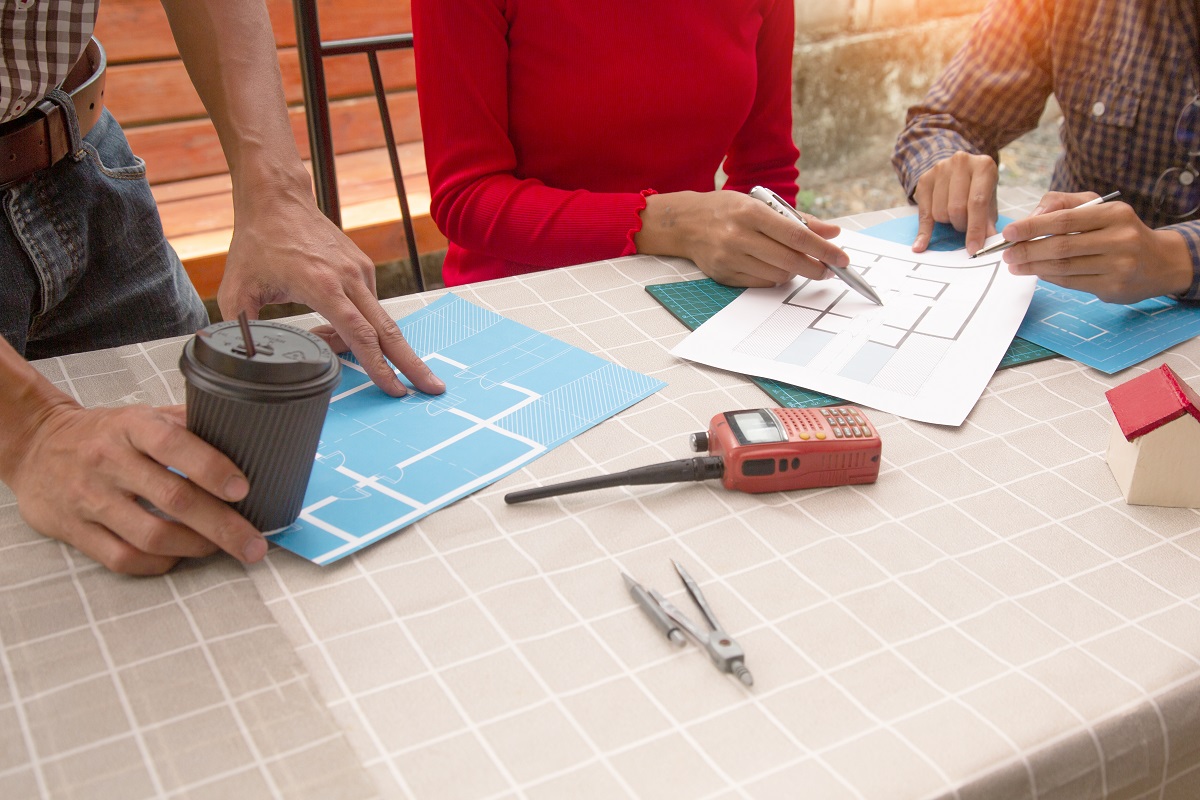Interior Design vs. Civil Engineering: Which Career is Right for You?
When we talk about modernization and development, we often picture towering buildings, innovative infrastructure, and stylish interiors. These spaces reflect evolving trends—from minimalistic and Scandinavian styles to the increasingly popular bohemian aesthetic.
Choosing a career in this evolving landscape can be challenging, especially when deciding between two impactful professions like- civil engineering and interior design. Both fields are rewarding in their own ways and offer unique opportunities, but they differ in the type of work that is involved, the skills required, and the educational paths that is needed to succeed.
In this blog, we will explore both the careers in depth—highlighting their key differences and helping you decide which path might be the right for your interests and goals.
What Is Interior Design?
Do you want free career counseling?
Ignite Your Ambitions- Seize the Opportunity for a Free Career Counseling Session.
- 30+ Years in Education
- 250+ Faculties
- 30K+ Alumni Network
- 10th in World Ranking
- 1000+ Celebrity
- 120+ Countries Students Enrolled
Interior design is the art and science of enhancing the interior of a space to make it functional, aesthetically pleasing, and aligned with the client’s needs. It is a creative and technical discipline that involves transforming spaces in residential homes, offices, and commercial buildings.
Interior designers are responsible for space planning, colour selection, furniture arrangement, lighting design, and choosing materials and finishes. A good interior designer skilfully balances form and function and has strong problem-solving and communication skills.
What Is Civil Engineering?
Book Now →
Civil engineering, on the other hand, is a broad and traditional field of engineering that deals with the design, construction, and maintenance of infrastructure such as roads, bridges, dams, and buildings. Civil engineers apply principles from physics, mathematics, and material science to build safe, sustainable, and durable structures.
Read Also: Top 10 Careers to Pursue with a Degree in Interior Design
Their work ranges from ensuring a building’s structural integrity to managing large-scale construction projects. Civil engineers are also involved in environmental impact assessments, cost estimations, and project management.
Do you want free career counseling?
Ignite Your Ambitions- Seize the Opportunity for a Free Career Counseling Session.Key Differences Between Interior Design and Civil Engineering
1. Type of Work
The most significant distinction between the two professions lies in their work. Where the Interior designers focus on the aesthetics and functionality of indoor spaces, whereas the civil engineers focus on the structural and foundational aspects of buildings and infrastructure.
Interior designers work on layouts, colour schemes, decor, and furniture to create spaces that reflect the personality and needs of the users. Civil engineers concentrate on materials, load-bearing capacity, safety regulations, and most importantly the environmental impact to ensure a structure is stable and sustainable. With the rise of green building practices, smart cities, and sustainable urban planning, civil engineering isn’t just about the basics anymore—it’s evolving into a dynamic, innovative, and future-focused profession.
2. Educational Requirements
The educational paths for both careers are quite different, and both require formal education.
For interior design, students may pursue a diploma or bachelor’s degree in interior design. These programs emphasize art, design principles, space planning, and material knowledge. Advanced learners can pursue a Master in Interior Designing. Many institutions these days offer interior design courses after 12th grade, as more students are showing interest in this creative field. With growing awareness and futuristic opportunities, interior design is becoming a popular career choice among young students.
Civil engineering requires a Bachelor of Civil Engineering (B.E./B.Tech) and focuses more on mathematics, physics, and structural principles. Advanced study can include a Master’s in Civil Engineering with specializations like structural, geotechnical, or transportation engineering.
Civil engineering is increasingly becoming a go-to choice for many students, and for good reason. It’s a field that combines technical expertise with real-world impact, giving students the opportunity to design and build structures that serve communities and stand the test of time. From bridges to highways, and even entire cities, civil engineers are at the forefront of creating the infrastructure we rely on daily.
Read Also: Digital Interior Design: The Future of Styling & Courses

3. Skills Required
While both professions demand creativity and technical skills, the emphasis differs:
Interior Designers need strong visual creativity, spatial awareness, a good sense of aesthetics, and communication skills. They must also be adept at client management and conceptualizing functional yet appealing designs.
Civil Engineers require analytical thinking, strong mathematical and technical skills, attention to detail, and an ability to manage large-scale projects. They must be proficient in structural analysis, project management, and engineering software tools.
4. Job Market and Career Prospects
Career opportunities vary between the two fields due to industry demand.
Interior designers can work in residential, commercial, hospitality, or office design. Many also work as freelancers or consultants, giving them flexibility. Specializations include luxury, sustainable, or business interior design.
Civil engineers are in high demand, given the constant need for infrastructure development. They may work for government agencies, private firms, or as consultants. Specializations include environmental, transportation, or structural engineering.
Generally, civil engineers tend to earn higher salaries due to the technical nature of their work and the scale of projects. However, experienced interior designers with strong portfolios, especially in high-end or commercial projects, can also earn lucrative incomes.
The relevance for Both Civil Engineers and Interior Designers
Modern development is not just about building strong structures—it’s also about creating spaces where people can live, work, and feel inspired. That’s why both civil engineers and interior designers are essential in today’s world. While their roles are different, each contributes in a unique way to shaping the spaces we live in.
Why We Need Civil Engineers
Civil engineers form the backbone of infrastructure. Without them, we wouldn’t have the roads we drive on, the bridges we cross, or the buildings we live and work in. They ensure that every structure is:
Safe and stable
Environmentally sustainable
Cost-efficient and long-lasting
From planning and designing to overseeing construction, their work is critical for the growth and development of cities and the nation.
Why Interior Designers Matter
While civil engineers focus on structure, interior designers focus on how a space feels and functions once it’s built. They create environments that are not only beautiful but also practical and comfortable. Interior designers are especially important because:
They improve the quality of everyday life through thoughtful design
They make spaces more efficient and functional
They influence moods, emotions, and experiences through colour, lighting, and layout
Whether it’s a cozy home, a productive office, or a relaxing hotel room, interior designers shape the atmosphere and character of the spaces we use every day.
Read Also: Role of an Interior Designer: From Concept to Execution
What Civil Engineering and Interior Design Have in Common
Even though they specialize in different aspects of a project, civil engineers and interior designers often work side by side—and they share more in common than you might think:
Problem-Solving: Both need to think creatively and logically to solve challenges.
Project Management: Time, budget, and coordination are key in both fields.
Client Satisfaction: Whether it’s a homeowner or a business, meeting the client’s needs is a top priority.
Team Collaboration: Civil engineers and interior designers often work together, especially on large projects like residential complexes, commercial buildings, or public infrastructure.
Main Differences Between the Courses and Careers
Here’s a breakdown of the key differences between interior design and civil engineering:
Aspect
Civil Engineering
Interior Design
Main Focus
Structural design and infrastructure
Aesthetic, layout, and functionality of interior spaces
Education Path
B.E./B.Tech in Civil Engineering, M.Tech for specialization
Diploma or bachelor’s in interior design, master’s for advanced knowledge
Key Skills
Math, physics, structural analysis, site supervision
Creativity, space planning, colour theory, material selection
Tools to be learned
AutoCAD, STAAD Pro, surveying tools, project management software
AutoCAD, SketchUp, 3D modelling, design software
Work Environment
On construction sites, engineering firms, government bodies
Design studios, on-site consultations, client meetings
Job Titles
Site Engineer, Structural Engineer, Project Manager
Interior Designer, Space Planner, Design Consultant
Which Career Is Right for You?
Ultimately, the decision between interior design and civil engineering depends on your interests, skills, and long-term goals.
If you enjoy working with colours, textures, and layouts, and have a passion for creating beautiful and functional spaces, then interior design may be the ideal career path. Interior design plays a vital role in setting the mood of a space—it shapes the atmosphere, influences emotions, and can even spark creativity. As the saying goes, “First impression is the last impression.”
Read Also: Modern vs Contemporary Interior Design: What’s the Real Difference?
Whereas, if you have a strong foundation in math and science, enjoy solving complex problems, and are passionate about designing large-scale structures, then civil engineering might be the better fit. It is a field that combines logic, calculation, and vision to shape the physical world around us.
Salary Range and Top Employers in Civil Engineering vs. Interior Design
| Career Path | Salary Range (India) | Top Companies to Apply For |
| Civil Engineering | ₹3 – ₹15 LPA | L&T, Tata Projects, Shapoorji Pallonji, Afcons, Reliance Infra |
| Interior Design | ₹2.5 – ₹12 LPA | Livspace, Homelane, Design Café, Morphogenesis, Studio Lotus |
Comparison table between Civil Engineering and Interior Design
| Aspect | Civil Engineering | Interior Design |
| Main Focus | Structural design and infrastructure | Aesthetic, layout, and functionality of interior spaces |
| Education Path | B.E./B.Tech in Civil Engineering, M.Tech for specialization | Diploma or bachelor’s in interior design, master’s for advanced knowledge |
| Key Skills | Math, physics, structural analysis, site supervision | Creativity, space planning, colour theory, material selection |
| Tools Used | AutoCAD, STAAD Pro, surveying tools, project management software | AutoCAD, SketchUp, 3D modelling, design software |
| Work Environment | On construction sites, engineering firms, government bodies | Design studios, on-site consultations, client meetings |
| Job Titles | Site Engineer, Structural Engineer, Project Manager | Interior Designer, Space Planner, Design Consultant |
| Final Outcome | Safe, durable, and functional buildings and infrastructure | Attractive, efficient, and personalized interior spaces |
Read Also: 7 Creative Careers That Are Exploding Right Now
Final Thoughts
This comparison can help you see where your interests fit best. Some people even find ways to combine both paths by working in design-build firms or interdisciplinary teams where structure and style go hand in hand.
Both civil engineering and interior design offer fulfilling and dynamic career opportunities. Your success in either field depends on choosing the right educational path and staying true to your interests and strengths.
Whether you enrol in a diploma in interior design or pursue a Master’s in Civil Engineering, follow the path that resonates with your passion. The key is to make an informed decision and commit to continuous learning and growth in your chosen profession. If you have a passion for interior design, then I believe AAFT is the right place for you.

AAFT has been providing the world with limitless creativity and expression since 1993! Through a dynamic and industry-driven curriculum, AAFT provides engaging and captivating articles to persuasive blogs and empowers its readers to explore diverse avenues of creative media education-related content.






